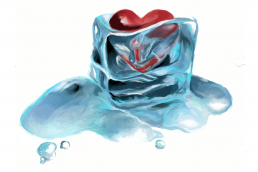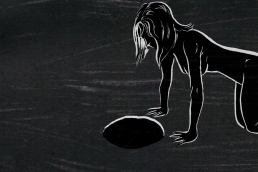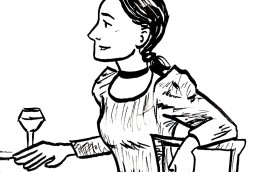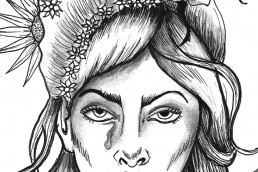by Sam Glass
Image credit: Anna Popovic, via Unsplash
It can be fairly common for people to get sad about summer coming to an end, with the return of school and the end of beach days and long summer evenings, but what happens when this sadness turns to something more? “Seasonal Affective Disorder”, or SAD, also known as ‘Winter depression’ affects approximately 1 in 15 people according to the NHS.
Seasonal Affective Disorder is a kind of depression that comes and goes with changes in season, and it is categorised into two types. The milder version is called “sub-syndromal SAD” and is also known as the “winter blues”. However for those with full-blown SAD, daily life can become all but impossible without treatment throughout Winter – particularly December through to February. The symptoms of SAD may begin displaying in Autumn, when the days start getting shorter and the nights longer. It is not uncommon for it to improve and completely disappear throughout Spring and Summer, only returning for the colder months each year.
The symptoms of Seasonal Affective Disorder are relatively similar to typical depression. The signs to look out for may include:
• A persistent low mood
• Not finding pleasure in activities that were once enjoyable
• Irritability and/or frustration
• Feelings of guilt and worthlessness
• Lack of energy, feeling extremely tired throughout the day even if you slept through the night
• Sleeping too much and finding it difficult to get out of bed in the morning
• Changes in appetite: not having an appetite or overeating
• Thoughts of self-harm or suicide
If you are experiencing any of the above symptoms and have had them for longer than 2 weeks, be sure to visit your GP. If you experience the symptoms all year round and it is not affected by the seasonal change, you may be suffering from depression, so a trip to a mental health professional would be worth it. Healthy lifestyle habits can also help minimise SAD symptoms. These include exercise, regular sleep, and maintaining a healthy diet with lean protein, fruits, and vegetable.
The precise causes of Seasonal Affective Disorder are unknown, however there are a few factors believed to be linked. The main theory is that the lack of sunlight may stop the hypothalamus from functioning properly. The hypothalamus is a region of the brain responsible for a range of different functions, including the regulation of certain hormones. In people with SAD, more melatonin (the hormone that regulates sleep and wakefulness) may be released, causing sufferers to feel sleepier than usual. Another hormone which can be impacted is serotonin, which is responsible for emotions, appetite and sleep – meaning all of these things can be affected by a simple lack of sunlight. It has also been theorised that Seasonal Affective Disorder may be passed on genetically.
It is generally believed that around 2% of people in Northern Europe suffer severely from SAD, with many more experiencing milder symptoms. Across the world the ratio of affected persons correlates highly with distance from the equator, except where there is snow on the ground, where SAD becomes less common (perhaps due to the reflection of light). More women than men are diagnosed as having SAD. Children and adolescents are also vulnerable.
So how is it treated?
Seasonal Affective Disorder can be treated in a number of ways. In some cases lifestyle changes have been found to help, including trying to get as much natural light as possible, exercising regularly, eating well and managing your stress levels. Another form of treatment is light therapy. Light therapy involves a lamp which exposes you to artificial sunlight, triggering the hypothalamus to function normally. Other forms of treatment include types of therapies such as CBT (Cognitive Behavioural Therapy) or medication.
For more information, you can visit the Seasonal Affective Disorder Association or the NHS page on Seasonal Affective Disorder.
Sam Glass
Sam Glass is currently employed as a Social Media and PR Executive for Thrive, who create and develop apps for common mental health conditions using clinically proven techniques for detection, prevention and treatment. She is also completing her Undergraduate degree in Forensic Psychology from home whilst raising her daughter of 2 years. Sam is passionate about mental health and reducing the stigma surrounding it.







